Our Team: Surgical Neuromodulation and Brain Mapping Lab
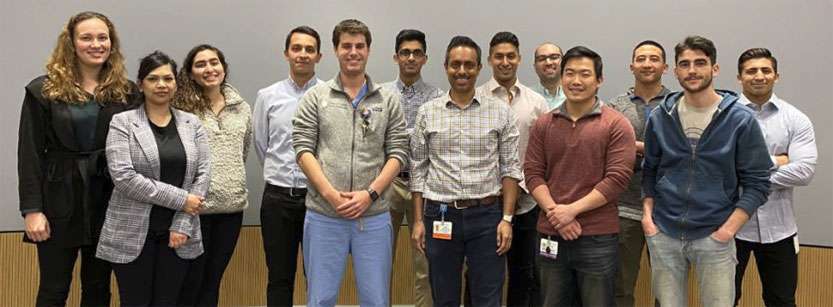
Principal Investigator

Ausaf Bari, MD, PhD, Associate Professor, UCLA Neurosurgery
Dr. Bari specializes in the neurosurgical repair and restoration of brain and nerve function. Following his neurosurgery residency training at UCLA, Dr. Bari was awarded the prestigious William P. Van Wagenen Fellowship to train at the world-renowned functional neurosurgery program at the University of Toronto. He has extensive clinical and research experience in the use of deep brain stimulation (DBS) in the treatment of both movement and psychiatric disorders. Dr. Bari's clinical practice includes DBS surgery for Parkinson's disease, tremor, dystonia, depression and OCD. In addition, his clinical practice includes neurosurgery for brain tumors, pain, and peripheral nerve disorders. More >
Assistant Researcher
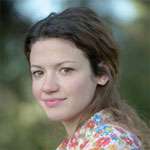
Evangelia Tsolaki, PhD
Evangelia Tsolaki received her BS in Electrical and Computer Engineering from Technical University of Crete, Greece, her MS in Biomedical Engineering from the European Postgraduate Programme at University of Patras, Greece and her PhD from the Medical School at University of Thessaly, Greece. Prior joining Dr. Bari’s lab, Evangelia worked at Dr Pouratian’s lab at UCLA as postdoc scholar and then as an Assistant Project Scientist. Her focus is on the investigation of imaging-based biomarkers of therapeutic outcomes and patient-specific targeting of neuromodulatory interventions for chronic pain and psychiatric disorders.
Postdoctoral Scholars/Research Assistant

Vincent Man, PhD
Vincent received his PhD in neuroscience from the University of Toronto and is currently a senior postdoctoral scholar at the California Institute of Technology. His research focuses on reward and skill learning for strategic decision-making, and how the human brain represents multiple forms of prediction error for these processes. His approach combines computational modelling of behaviour in naturalistic experimental contexts with multi-modal neuroimaging including fMRI, EEG, and invasive electrophysiology.
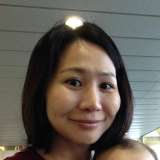
Jihye Rye, PhD
Jihye received her PhD in psychology from Rutgers U in 2019. Her main research focus is on chronic pain - specifically, on how chronic pain emerges and how different pain relief methods impact the limbic system. She approaches this question by examining the electrophysiological signals obtained intraoperatively from patients undergoing an awake DBS surgery, and from epilepsy patients with implanted depth electrodes. Her interests outside of research include parenting, cats, spirituality, and music.
Medical Students
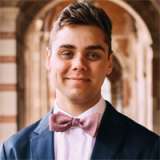
Jacob A. Alderete, MD Candidate
Jacob is a second-year medical student at the David Geffen School of Medicine at UCLA. He previously graduated from UCLA with a degree in neuroscience in 2020, where he studied the underlying neural circuitry of opioid pharmacology. His current interests involve better understanding the neural circuitry underlying pain and addiction in humans through the use of implanted neuromodulation or EEG devices. In addition, he is involved in a translational-science study investigating vagal nerve stimulation and deep brain stimulation to treat pain and addiction.
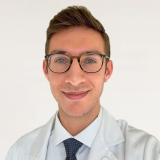
Ziad Rifi, MD Candidate
Ziad is a 4th year medical student at the David Geffen School of Medicine at UCLA. He received his undergraduate degree in Molecular & Cell Biology from UC Berkeley, where he completed an honors thesis investigating the cellular mechanisms underlying the sensations of touch, pain, and itch. His clinical interests involve the use of Deep Brain Stimulation for treatment-refractory neurological and psychiatric disorders, including tremor, chronic pain, depression, and addiction. His current work utilizes probabilistic tractography to develop patient-specific targeting techniques for DBS and focused ultrasound procedures with the goal of personalizing neurosurgical care.

Michael J. Ward, MS, MD Candidate
Michael is a medical student at the David Geffen School of Medicine at UCLA. He earned a BS in neuroscience and MS in biomedical science from the University of Pittsburgh. Prior to joining Dr. Bari’s lab, Mr. Ward worked as a researcher in the University of Pittsburgh Department of Neurological Surgery under the mentorship of Avniel Ghuman, PhD, and Mark Richardson, MD, PhD. Mr. Ward has extensive research experience, with expertise in intracranial EEG, extraoperative electrical stimulation mapping, and Deep Brain Stimulation (DBS). His clinical interests are focused in academic neurosurgery, specifically involving restorative neuromodulation for chronic pain and drug-resistant epilepsy. Michael’s research combines neuroimaging with invasive electrophysiology to study the neural correlates of treatment-resistant neurological and psychiatric disorders, with additional interests in movement disorders, visual cognition, and restorative device development.
Collaborators
Nader Pouratian, MD, PhD, Chair, Dept. of Neurological Surgery at UT Southwestern Medical Center
Saman Hazany, MD, Keck Medicine of USC
Katy Cross
John O'Doherty (Caltech)
Ueli Rutishauser (Caltech)
Richard Anderson
Emily Rosario
Reza Tadayon-Nejad
Michelle Basso (UW)
Lab Coordinator
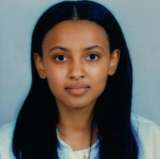
Meskerem Tolossa
Meskerem Tolossa (Meski) is lab assistant in our lab. She graduated with a B.S in Biomedical Sciences and minor in Chemistry from Western Michigan University. During her undergrad, she did Neurobiology research focused on Neuronal connectivity in the inner ear. Prior to joining our lab, she worked as a medical scribe at UCLA, Department of Neurosurgery.